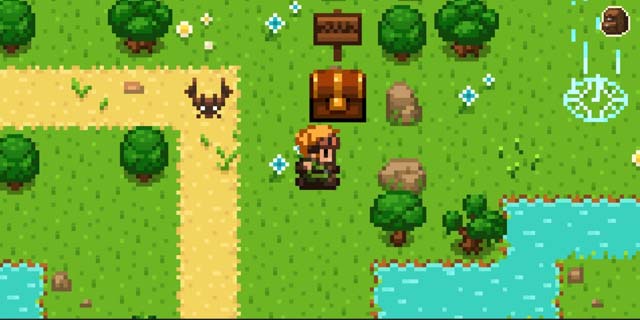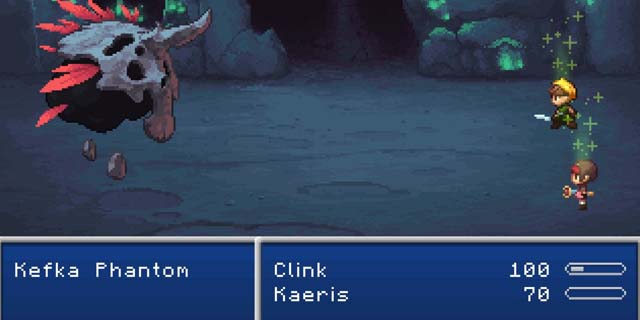
Over the storied history of games, we’ve learned that you can’t get everything perfect on the first try. When companies release new titles, we learn about our mistakes and how certain mechanics work. Along with gameplay advancements come graphical progression. From pixels to polygons, we see a series evolve over a number of years and teach us a grand lesson on how far we’ve come with games in our past and in our present.
What Evoland manages to do is take that progression and completely run through it in a couple of hours.
You take the role of Clink (wait a second…), a spiky-haired, green outfit-wearing adventurer, who suddenly finds himself helping out a woman named Kaeris (wait a minute…), a magic user decked out in a pink dress, who’s looking for help to save her village from destruction. Your job is to stop the villain to from pulling off the destruction. Sounds typical enough, right? It’s a fairly straightforward story.

Contender pretender
Evoland’s visual progression is smooth and works well enough for its thesis, but mechanically it just can’t keep up. The further along the game progresses, the more awkward and clunky it gets, especially when it tries to ape Diablo. – Lucas White
From the get-go, the game is extremely tongue-in-cheek with how this game will progress. In almost a matter of minutes, we see the game evolve from a monochrome 8-bit overworld adventure game into a colorful and bright 16-bit game all in the style of The Legend of Zelda series. Soon enough, the game evolves from 2D textures into a fully-rendered 3D game, through advancements unlocked throughout the game by opening chests. You’ll mainly shuffle between the two game types, and even reach a dungeon that plays like Diablo.
The game takes a lot of what made the Legend of Zelda, Final Fantasy and Diablo series so great. While visually, it captures everything about each of these series beautifully, somehow it manages to fail terribly in emulating the games’ mechanics.

Prerequisites
As a history lesson, Evoland works quite well until it hits around the PS1 era. It begins to assume the players’ familiarity with the tropes, defeating the purpose and turning more into a full-on parody of specific games rather than a meaningful exploration of gaming growth. – Lucas White
Each segment has its own tragic flaw. Zelda segments have really terrible hit detection on hitting enemies. Final Fantasy segments suffer from too-frequent random battles, as well as not actually being able to use items outside of battles, almost setting yourself up for death if you’re not careful. The Diablo segment, as short as it is, fails to capitalize in hit detection as well. Through most of it, the controls will feel so clunky and unfair that the enemy can get the advantage on you without even trying.
What makes this game interesting is the novel mechanical progression. In one part of the game, you’re forced to solve a puzzle by switching between the 2D and 3D Zelda-style elements. Certain sections can only be traversed in one dimension, but actions will ultimately influence the other one. While this was one of the most interesting parts of the game, I found myself just wanting more like it when it returned to more frustrating mechanics.

Grind sessions
Once JRPG mechanics take over, the option to grind levels rears its ugly head. It isn’t necessary, but if you take the time to build up some levels and cash, you can discover a few somewhat-hidden gags that might be worth your while. – Lucas White
As an extra bit that almost serves no purpose to the game, you collect cards. These cards can be used to play a game very reminiscent of Final Fantasy VIII’s Triple Triad.
By no stretch is Evoland bad. I found myself enjoying a lot of what this game had to offer, but it felt rushed. The game does a wonderful job of reminding us about the good ol’ days, but does the same in reminding us what we hated about it. Ultimately, it left me wanting more. Much more.
This game was provided for review by GOG.com.
Pros: Interesting evolutionary gameplay, faithful graphical segments
Cons: Terrible hit detection, too many random encounters, too short



















